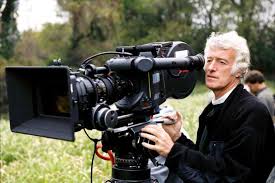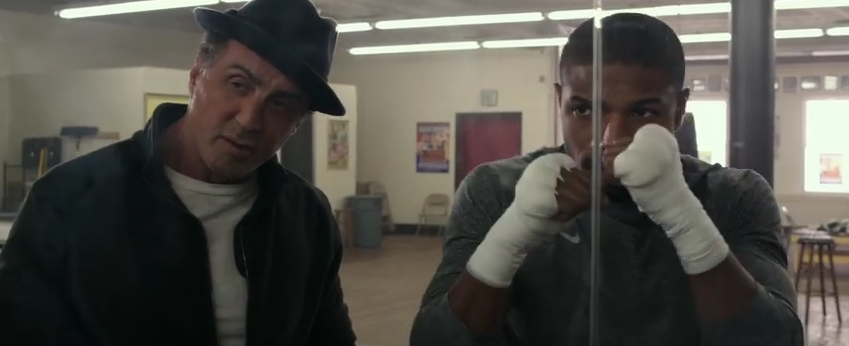 The creative leaps forward we've been seeing in the past decade have been staggering with our prominent cinematographers constantly developing new ways to experiment with visual storytelling and reinventing old tricks. Each year we also get exciting new voices added to the fray, but the Academy's cinematography branch has been reticent to include such future legends as Bradford Young and Greg Fraser.
The creative leaps forward we've been seeing in the past decade have been staggering with our prominent cinematographers constantly developing new ways to experiment with visual storytelling and reinventing old tricks. Each year we also get exciting new voices added to the fray, but the Academy's cinematography branch has been reticent to include such future legends as Bradford Young and Greg Fraser.
This year is no different, with the heavyweight directors of photography set to dominate the category once again. Previous winners and perenial nominees Emmanuel Lubezki (The Revenant), Robert Richardson (the 70MM UltraPanivision The Hateful Eight), Janusz Kaminski (Bridge of Spies), Edward Lachman (Carol), and John Seale (Mad Max: Fury Road) are all in the mix with the still Oscar-less Roger Deakins (pictured above, Sicario) is always a threat.
But why so exclusive? This isn't a category that always hugs close to the Best Picture lineup, and while they've rewarded creative risks, it is typically for a seasoned vet rather than a fresh voice. None of this is meant to diss these veteran artists - they're the elite for a reason. However, here are some non-frontrunner candidates worthy of more discussion:

Creed (Maryse Alberti) - While the ballyhooed single take shot is a perfect example of the furious energy Alberti visually brings to key story moments, it's the more subtextual moments that shine - like the shot above or Adonis shadowboxing to stock footage of his father. Her work here is like a less taxing companion to what she did with The Wrestler, but just as potent. With female cinematographers unrecognized by the branch, I dare you to see her work and claim that the lack of female nominees is because there are no worthy candidates.

The Duke of Burgundy (Nic Knowland) - The film registers as such an enticing visual and aural experience that it's difficult not to get caught in its spell, even as the procedings become tedious. Knowland's work is alluring, giving a lush gaze that both provides character insight and titilates with precision. Divine, and oh so subtly sinister.

Ex Machina (Rob Hardy) - Infusing an unexpected color palette into his stately, often unmoving camera keeps this from being a remote visual exercise. Hardy also achieves the delicate balance of genre elements, sexual suggestion, and the undercurrent of WTFness present in the film's other elements.

It Follows (Mike Gioulakis) - Working in tandem with a nerve-wrattling score, Gioulakis's luridly Giallo palette turns the bland Detroit suburban landscape to menacing at every dark corner. Those key revolving camera shots may not be revolutionary, but damn are they effective and chilling.

Kumiko the Treasure Hunter (Sean Porter) - Porter's canvas is as ambiguous as the film itself: is it triumphantly hopeful or warningly bleak? As starkly remote as it is acutely detailed, his patient and deliberate camerawork turns up the tension with even the slightest pan or zoom.

Magic Mike XXL ("Peter Andrews") - Visual wit is a skill, too! "Andrews" is equally fascinated by the experience of the performer, dance recipient, and the crowd watching, creating a visual variety beyond close up flesh-oggling that allows the audience to experience the giddy fun from all perspectives.

Room (Danny Cohen) - The most likely in this lineup to receive awards recognition (Cohen is a former Oscar nominee, after all). The first act is presented with incredible spatial economy - also thanks to inventive production design from Ethan Tobman - where the extreme confinement is felt but doesn't confine the storytelling. Alternately, post-escape sequences never provide the audience this clarity of Jack and Ma's environment. Bonus points: Cohen's distanced camera placement in the haircut scene, respecting a crucial private moment.

Tangerine (Sean Baker & Radium Cheung) - Famously shot with iPhones, which lend a ferocious mobility to Sin-Dee's angry hunt on the dynamic LA streets. The budget may have been tiny, but that low-fi dexterity allows for a huge canvas of of underbelly to revolve around its charismatic leads. Baker & Cheung also know how to capture a real moment, like in the final shot as waves of compassion and forgiveness roll over Sin-Dee and Alexandra before our eyes.

Tom at the Farm (Andre Turpin) - Claustrophia invades every frame, from the eerie expanse of fields to the manic, confrontational close-ups. Turpin creates an aesthetic that goes a long way to sell why Tom might be compelled to stay in this psychological hellhole, better than the script itself.

Victoria (Sturla Brandth Grovlen) - I may be cold on the film, but the extended shot trend has never been used to this exhaustive result. Grovlen's achievement isn't just the single take, but that there is remarkable variety within the entire duration - weaving, drunken close-ups one minute, effectively establishing the space of one of the many locales the next. And that piano solo!
With so much innovation happening right now, it'd be lovely to see an outsider make its way into this often closed race. The talent pool is both wide and deep, and this list is just a toe in the water of what the branch should consider for their ballots beyond the recognizable names. FYC!!